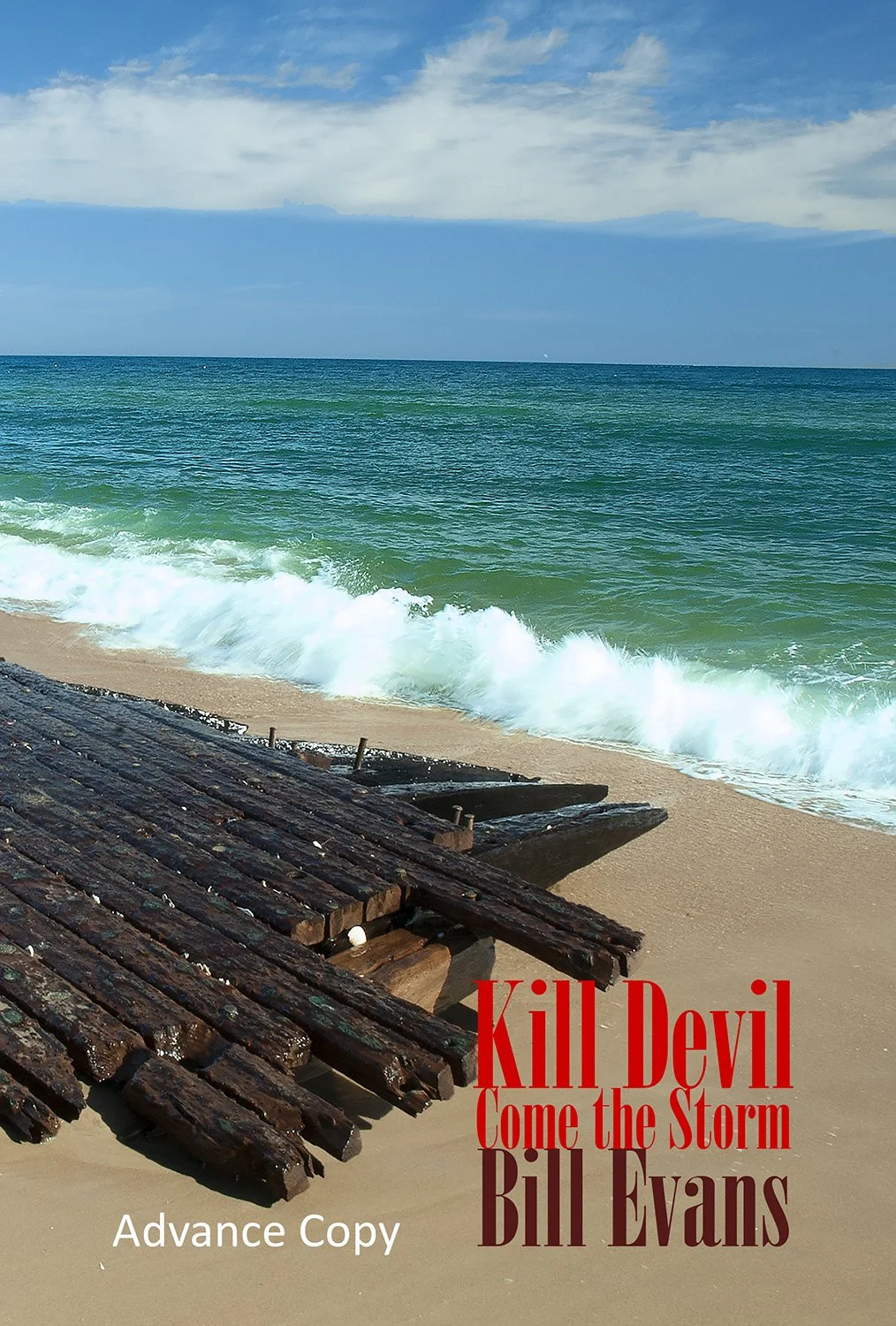Kill Devil - Come the Storm
Prince of Tides meets Liar’s Club
Whose child you are, what time and place you came from, this is your baggage to carry, and what you chose to do with your load will only take a lifetime to sort out.
Cover of Kill Devil Come the Storm - by William E. Evans, ©2023
I was a late reader of Conroy’s best novel, The Prince of Tides, accidentally coming on a radio interview about his teenage years at Gonzaga High School in the District. A Jesuit priest taught him how to face life better than Conroy’s father ever had. When your old man can’t hug you after your best high school basketball game?
Even if it seemed like it at the time, not having a father wasn’t the most tragic way to grow up.
Conroy, best I can tell, barely made it out alive. The time under his tyrannical soldier-cum-father’s roof inked an indelible tattoo on him. The Great Santini was suitable payback. Was it that the old man had to find enough steel to make it himself and had no means to turn it off when it came to his son? Can’t Marines have any softer thoughts other than being strong enough to fight? Camp Lejeune sits squarely in that part of the low country Conroy could describe in his sleep.
I enjoyed Conroy’s late interviews with Terry Gross on Fresh Air
Conroy cared about his characters. The setting for The Prince of Tides was amid a trailer load of southern history.
With much the same sad baggage, Kill Devil Come the Storm picks that up again not so many miles north. What I appreciated most about Conroy’s story was his way with a sly backhand with his New York City shrink—and his painterly descriptions of the languid low country South Carolina. I find it curious so few books of fiction have been set on the Outer Banks. The Outer Banks stand as large a landscape as the Rockies—languid scenery except when a named storm arrives.
…
Mary Karr’s The Liar’s Club is a childhood memoir with a sting. It is a hot habanero story about finding herself—far from any adult she could make sense of, least of all her mother. Her memoir of growing up wild in Texas is reprised in Brandy Jo Lowery, the injured daughter of a hard scrabble life looking for better.
For a plot starting out, all I knew was a runaway girl from Texas—and what the hell was I gonna do with her? I’d met women who’d made it out of tough childhoods, and I knew about low beat parents from my mother’s social work stories—way better stories than the nuns ever taught. But reading Karr’s story made that kind of family disfunction vividly real. And I wanted a battered protagonist who you still cheered for.
I picked out The Liar’s Club one day in an honest to goodness book store. Reading it was hard—I remember putting it down for days. Why would anyone want to write about that kind of family cruelty? Made me want to cry. I had no idea of Karr’s background as a well-educated poet when I first came on her book. Which kept the final twist to the story—that she survived—well hid in her pages. What a motherload of heart to write from.
The Liar’s Club reintroduced the memoir in its present form, particularly adopted by woman authors, a memoir with later descendants such Cheryl Strayed’s Wild. By contrast, Conroy chose the long form of Dickens and Tolstoy to tell his story. Their styles couldn’t be further different.
The two authors are from two different generations and backgrounds, but share a common theme: finding a way out of childhood trauma. If you’ve never read either, you’re missing out. Karr’s is whiplash fast and Conroy seems to have time on his hands to write a sprawling story about multiple characters.
What a motherload of heart to borrow from.
…
Writing late nights and on weekends, this novel has been a long time coming—since when Dawn Fields began bugging me to make better sense of my characters. What motivates them? she kept insisting. It’s to her the book is dedicated. She was forever challenging my own motivations; I’m hoping the work justifies all the email and phone texts she spent with me. Never met her in person, and now she’s gone—my loss for sure. It hurt when BookBaby published the news of her death. I always wanted to call her ‘Dawn” but she insisted on keeping it strictly professional, so I reluctantly x’d the sobriquet.
The blog story of Dawn Field, someone I still miss, is here: Dawn Field, PhD
Editing has been a labor not involving love of any kind. Line editing in particular. Line editing is where some poor soul goes literally line by stinking line looking for mistakes. After so many passes, your eyes just skim over the shit and work on improving the dialog instead. It’s tedious as hell and admittedly I’m lousy at it. Using software—I use ProWriting—doesn’t guarantee perfection. But paying someone to do it wasn’t in the budget. If I make any money on this one, it’s going toward finding an editor for the next one.
Did I say I have the second book almost done? Other than line editing…
…
An additional piece of editing for self publication no one talks about is moving from word processing to PDF for sending it to the printer, in this instance from MS Word to Adobe Acrobat. What, pray tell, might that involve? MS Word is notoriously bad at headers, footers and pagination. In a novel there are all those pesky chapters starting and ending. If you want all your chapters to begin on the right hand page, they need to be odd-numbered, and you’d be amazed how tricky that gets—add a paragraph and the chapter jumps to another page.
Page headings and footers on alternate pages, anyone? It’s a bitch in Word. Then Acrobat arbitrarily throws in extra blank pages that you must go through one at a time and pick out. Whether that’s a result of MS Word not knowing the difference between a page break and a section break, there’s no way to tell. Bring back WordPerfect!
And when you move an entire section from one place to another…
I tried Acrobat’s InDesign for a book of poems and learned the hard way on that software. You can’t do line editing using InDesign and stay sane. So my method is as follows: first I’ll print to PDF then visit Kinko’s for a paper copy, before getting a review copy—which is where I’m presently at. Even going through a printout of PDF prior, hinky things still happen. Another lesson learned.
Back when I spent my days hand designing buildings, every now and again I’d turn a plan sketch upside down to work on it. Your brain shifts to seeing other aspects you miss by looking at it from more than one view. Likewise, a computer screen can only show you so much about a story—printing off a PDF helps—but the final review copy is necessary.
Going live by the end of May is my goal. Says so on the title page. Holy bat shit, Robin, I finally have a deadline!
Post to the World, LLC alternate logo - by William E. Evans, ,©2018


